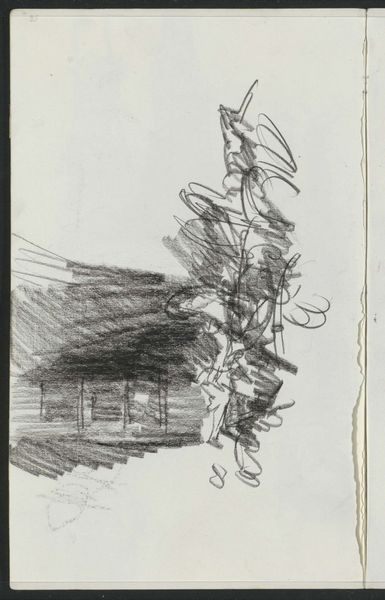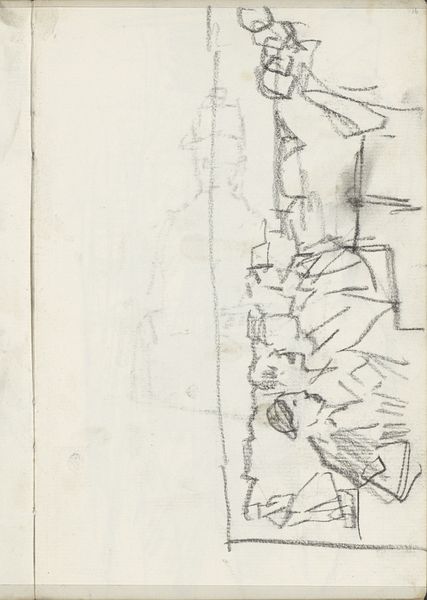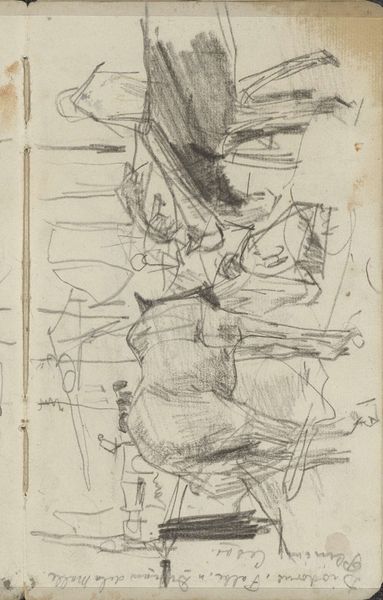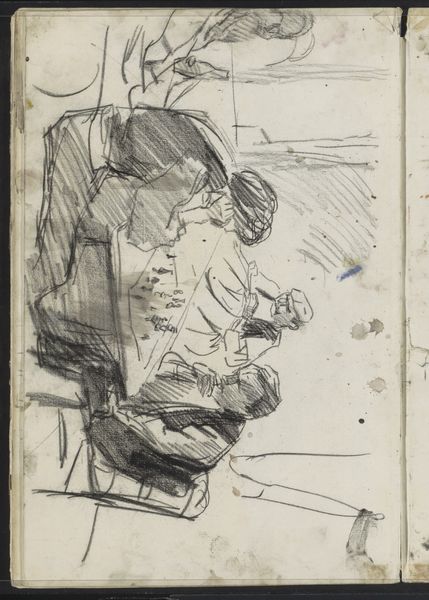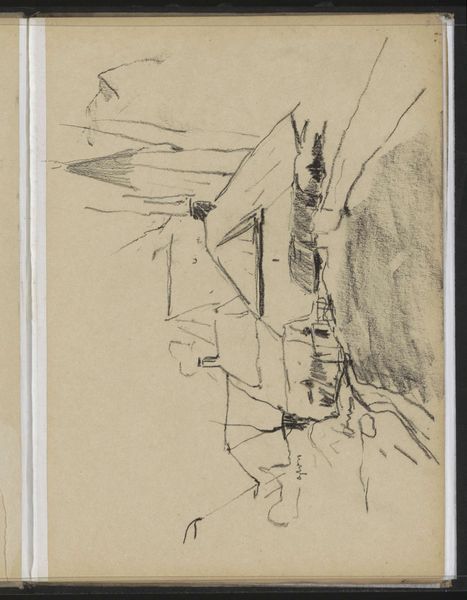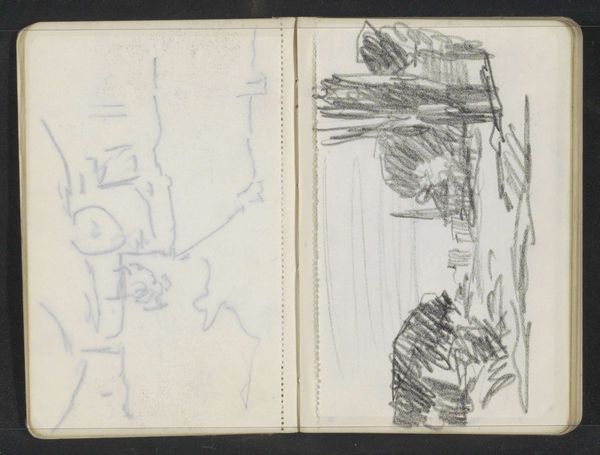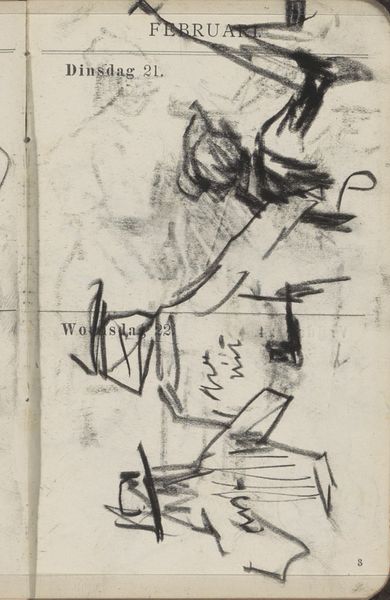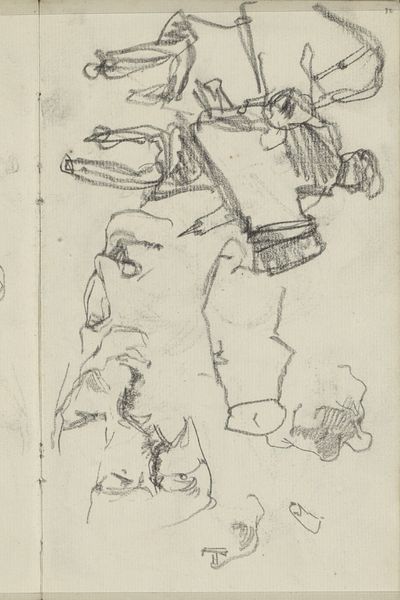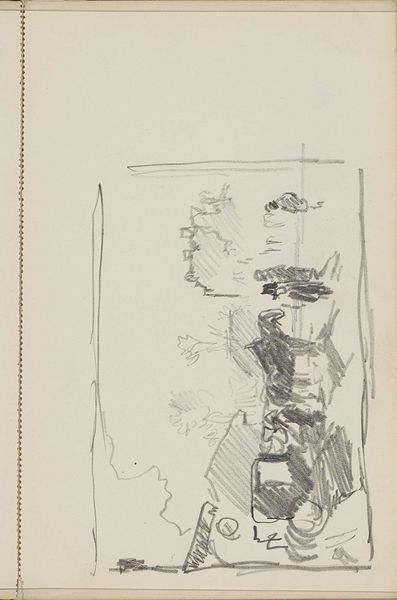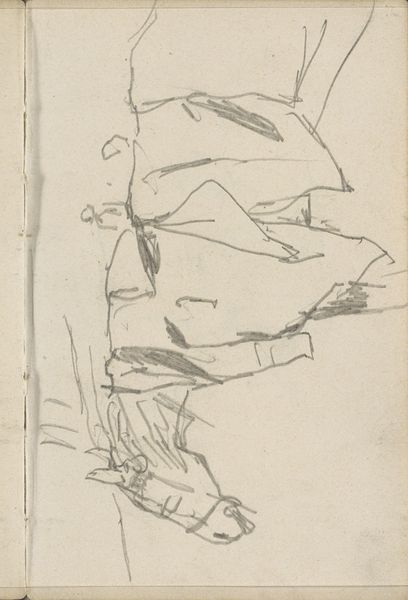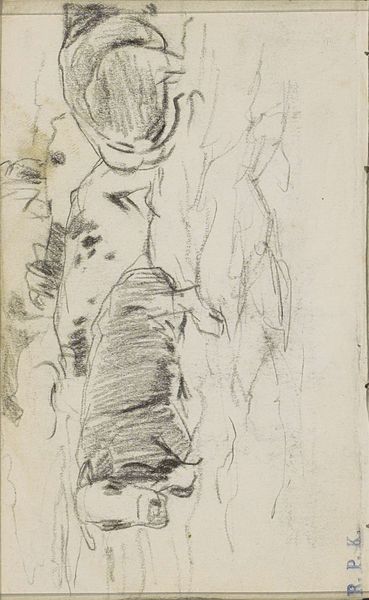
Copyright: Rijks Museum: Open Domain
Editor: Here we have Willem Bastiaan Tholen's pencil drawing, "Figure on a Path Along Houses and Trees," created sometime between 1900 and 1931. It feels like a quick sketch, almost dreamlike in its haziness. What jumps out to you as you look at the composition? Curator: The compelling element here lies in the interplay of tonal values and linear rhythms. Note how the artist employs varying degrees of pressure to articulate forms; the dense hatching to the left creates a sense of mass and depth, contrasting with the lighter, more suggestive lines defining the architectural elements. What does this contrast evoke for you? Editor: It does give it a very moody vibe, right? I wonder if it hints at feelings toward urban versus natural environments, as if the artist wants to make a comment on them? Curator: Perhaps, but formally, observe how the diagonal strokes in the 'trees' section generate movement, leading the eye towards the central cluster of forms. This compositional strategy directs our gaze. The lack of detail focuses our attention on form and line as primary conveyors of meaning. What might that meaning be, beyond the subject? Editor: Maybe the drawing's incompleteness or suggestion of natural vs man-made can tell a story. Thanks for the insights - it's not just a simple drawing of the houses; there's more to observe. Curator: Precisely. Through careful observation of composition and technique, we discern artistic intention. I appreciate the discussion!
Comments
No comments
Be the first to comment and join the conversation on the ultimate creative platform.
